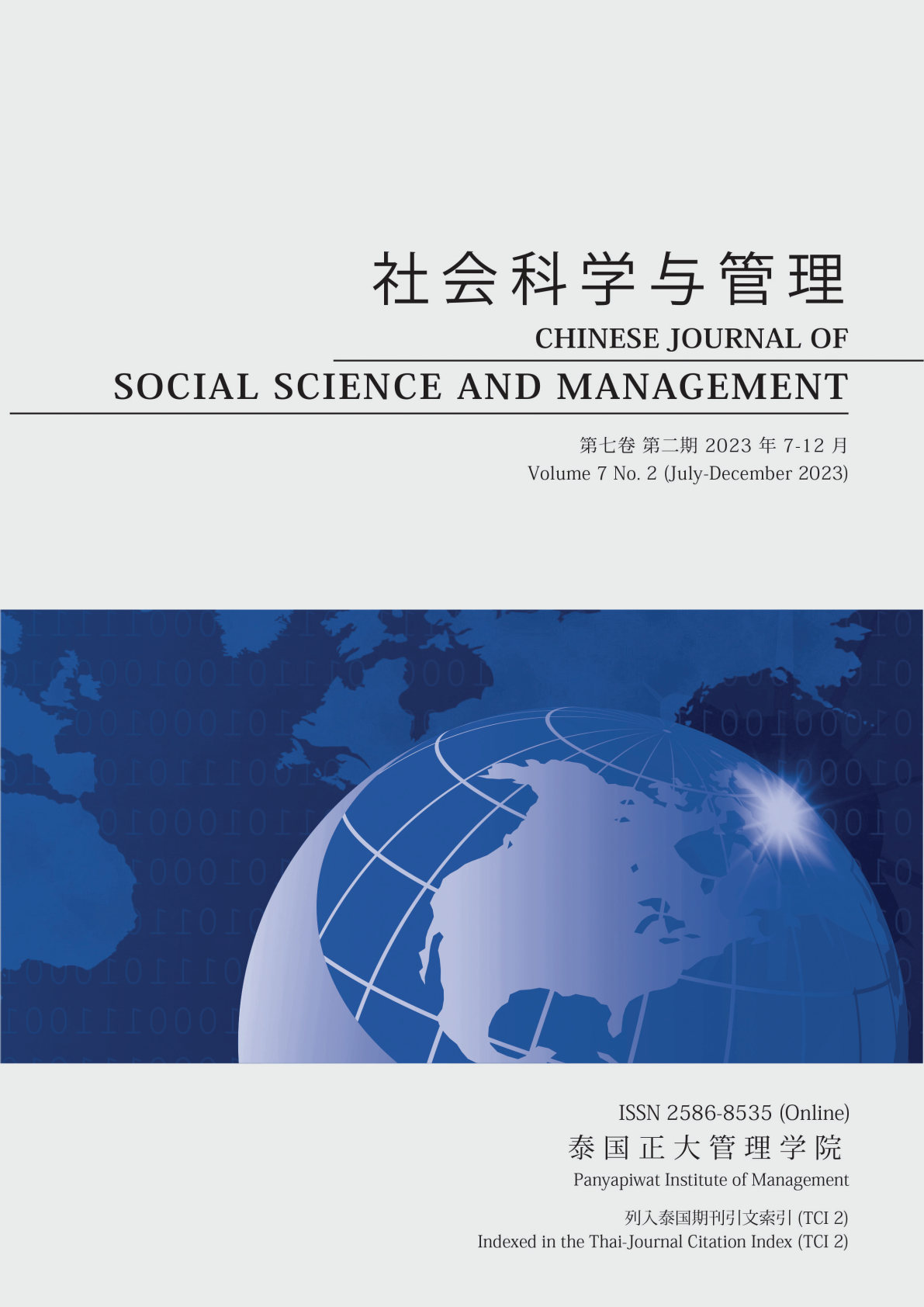THE USE OF MULTIPLE ATTRIBUTIVES IN MODERN CHINESE IN CHINESE TEXTBOOKS FOR TEACHING CHINESE AS A FOREIGN LANGUAGE—TAKING “HAN YU JIAO CHENG” AND “NEW PRACTICAL CHINESE READER” AS SAMPLES
Main Article Content
Abstract
The research on multiple attributives in modern Chinese is significant for Chinese grammar research and the field of Teaching Chinese as a Foreign Language. The previous research on multiple attributives is mainly based on empirical summaries, and no specific data supports the research conclusions. This current study explores the use of multiple attributives in Chinese textbooks for Teaching Chinese as a Foreign Language by comparing “Han Yu Jiao Cheng” and the “New Practical Chinese Reader”. The data shows that two attributives appear most frequently in these Chinese textbooks for foreign students. The frequencies of three attributives and four and above multiple attributives are arranged in descending order, with the higher the number of multiple attributives, the lower their frequency of occurrence in the textbooks. Through semantic analysis, it was found that the structure of “quantity + attribute” is the most frequently used in these two textbooks, followed by “ownership + attribute”; the structures with the highest frequency of use of three attributives are “quantity + attribute + attribute” and “possession + property + attribute”; and there is no obvious advantage in the semantic word order distribution of four or more attributives.
Article Details

This work is licensed under a Creative Commons Attribution-NonCommercial-NoDerivatives 4.0 International License.
Chinese Journal of Social Science and Management Editorial Division
The Office of Research and Development, Panyapiwat Institute of Management
85/1 Moo 2, Chaengwattana Rd., Bang Talat, Pakkred, Nonthaburi 11120, Thailand
Tel. 02 855 01048 E-mail: cjssm@pim.ac.th
References
Huang B., & Liao, X. (2002). Modern Chinese. Higher Education Press.
Li, J. (1924). The new Chinese grammar. The Commercial Press.
Li, J. (1958). The comparative grammar. Zhong Hua Book Company.
Li X. (2010). Vocabulary analysis and comparison of elementary Chinese textbooks in Thai universities. Chinese Studies Journal, 3(3).
Liu, X. (2005). Lecture hall for master of teaching Chinese as a foreign language: A talk about teaching Chinese as a foreign language. Peking University Press.
Liu, X. (2010). New practical Chinese reader. Beijing Language and Culture University Press. Liu, Y. (1989). The collection of Chinese grammar. Chinese Modern Press.
Lv, S., & Zhu, D. (1979). The speech on grammar and rhetoric. The Youth Press of China.
Miller, G. A. (1956). The magical number seven, plus or minus two: Some limits on our capacity for processing information. Psychological Review, 63, 81-97.
Shi, C. (1989). New grammar. East China Normal University Press.
Wang, L. (1989). History of Chinese grammar. Commercial Press.
Wang, Q. (2020). Research on the Chinese culture in teaching Chinese as a foreign language. Chinese and Foreign Entrepreneurs, 19, 190-191.
Wang, Y. (2014). The introduction of new practical Chinese reader. Beijing Language and Culture University Press.
Xu, J., Lei, Y., & Wang, F. (2015). The multiple attributives in elementary and intermediate levels of Bo Ya Chinese on the scientific principles of textbook. International Journal of Chinese Language, 6(2), 29-41.
Yang, J. (2009). Chinese course. Beijing Language and Culture University Press.
Zhang, J. (1987). Questions of Chinese grammar. The Social Science Press of China.
Zhu, L. (2020). A comparative study of “Experiencing basic Chinese course (Thai version)” and “Han Yu Jiao Cheng”. Teaching and Learning Research.


